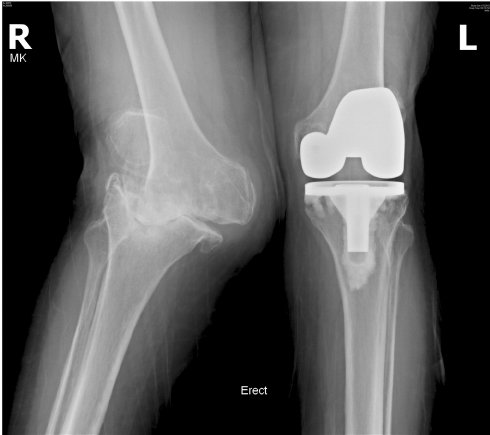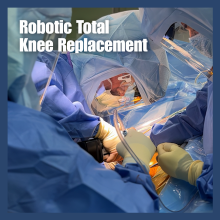Knee Osteoarthritis Treatment Decision Making
Knee Osteoarthritis (OA) is increasing in prevalence. Treatments for knee OA range from activity interventions, weight loss, physical therapy, and oral medications to joint injections and even joint replacement surgery. Multiple OA treatment options makes the shared decision-making (SDM) process vital. SDM is a concept that combines effective communication and surgeon-patient relationship building to understand patient preferences, expectations and needs, with the sharing of knowledge regarding treatments, risk factors, and benefits - prior to making an informed decision. To improve the process, there is growing interest in incorporating patient-reported outcome measurements (PROMs) in the decision-making process. PROMs reflect the physical, emotional, and social health implications from the patient’s perspective. Registries of these tools have revolutionized patient outcomes research and are increasingly applied to the clinical setting.
AI Augmented Knee Replacement Decision Making
PROM scores estimate postoperative, suggesting whether patients are more or less likely to experience clinically meaningful improvement after total knee replacement (TKR). This function of PROMs are now being augmented by artificial intelligence (AI) and machine learning to analyze complex relationships within large patient data sets. Combining the analytical power of machine learning with clinical and patient-generated data has the potential to provide more personalized estimations of expected health outcomes for individualized patients (perhaps minimizing guesswork during decision-making process). This study evaluated an AI-enabled patient decision aid called Joint Insights (OM1) delivering patient education, an interactive preferences assessment, and personalized outcome reports generated by a machine learning algorithm using a large national data set.
How might an AI-enabled decision aid affect the decision process for patients considering TKR compared with a more traditional digital patient education aid. Can AI provide an advantage? This study measured the patient’s perspective of SDM during the clinical encounter, consultation satisfaction, change in functional outcome, consultation duration, TKR rates, and treatment concordance
Study Conclusions: In this randomized clinical trial, an AI-enabled decision aid significantly improved decision quality, level of Shared Decision Making, satisfaction, and physical limitations without significantly impacting consultation times, TKR rates, or treatment coordination in patients considering knee replacement. Decision aids using a personalized, data-driven approach can enhance SDM in the management of knee OA.
Original Study Source: JAMA Network, https://loom.ly/h7z3T08








